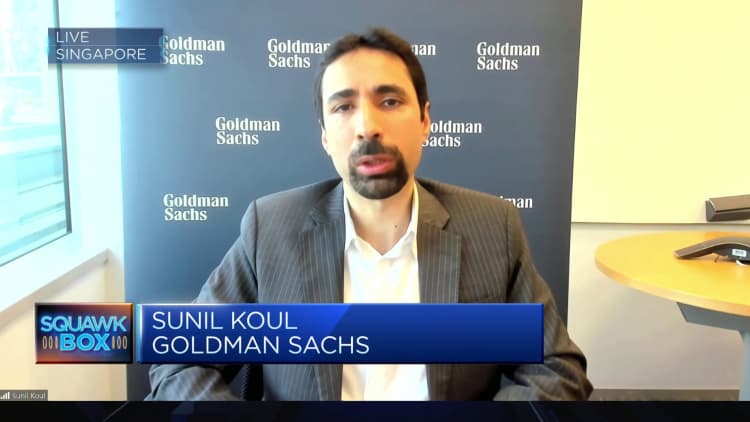Indian bonds are set to be added to global indexes. Here’s why it could be a gamechanger


An undated editorial illustration of the Indian rupee and the Indian flag.
Anand Purohit | Moment | Getty Images
The decision to include Indian government bonds in two prominent global indexes recently is being viewed as a shot in the arm for the rapidly growing country and is expected to bring in billions of inflows.
India’s bonds will be added to the JPMorgan Government Bond Index-Emerging Markets (GBI-EM) in June, the Wall Street lender announced in September.
The JPMorgan inclusion is reportedly India’s first ever inclusion in a global bond index.
Earlier this month, Bloomberg Index Services’ followed suit, announcing it will be adding Indian government bonds to its Emerging Market Local Currency Government Index from Jan. 31, 2025.
Such inclusions, analysts noted, could lead to billions of dollars worth of inflows into India’s rupee-denominated government debt. As demand rises, bond yields fall, supporting the local currency.
Deepak Agrawal, chief investment officer of debt at Kotak Mutual Fund, told CNBC he expects the inclusions to generate “stable flows of around $25 [billion] to $30 billion” over the next 12 to 18 months following the rebalancing period starting in June 2024.
“Overall we see this as a move in the right direction,” Agrawal added.
Goldman Sachs said it expects India’s bond markets to see inflows “upwards of $40 billion from the time of announcement to the end of the scale-in period, or around $2 billion per month.”
JPMorgan has said the inclusion of Indian bonds will be staggered over 10 months, starting from a 1% in June to a maximum 10% weightage in its index in April next year.
Big bump to growth
JPMorgan’s inclusion of Indian bonds has been hailed as a “milestone event” by Invest India, the government’s national investment promotion agency.
“The inclusion will help India realize the goal of a $5 trillion economy by 2030,” the agency said, adding it will help Asia’s third largest economy integrate with the global economy.
It will also help India raise more funds, meet growing borrowing costs and grow the investor base for government securities.
“As a consequence of these stable long-term global investments, Indian banks, the largest investors of government securities, will be able to lend more domestically, leading to infrastructure creation and employment generation,” Invest India said.
India’s sovereign bond market was valued at $1.2 trillion as of October and is broadly dominated by domestic institutional investors, according to Invest India.
Does this make it easier to invest in India?
“Index inclusion itself doesn’t make investing [in India] easier,” Kenneth Akintewe, head of Asian sovereign debt at investment firm Abrdn, told CNBC.
But Akintewe said that adding Indian bonds to global indexes encourage a much broader set of investors to invest in the country, “which frankly they should have been doing anyway given how strongly the market has performed.”
“However, the reforms that have led to index inclusion, namely the establishing of the fully accessible route (FAR) component of the government bond market, with FAR securities growing as a proportion of the market and these being index eligible, does make investing easier.”
Under the fully accessible route, eligible investors can put money in specified government securities without ceiling limits, paving the way for foreign investors to access Indian bond markets.
Akintewe predicted the additions to such indexes could approximately bring in a “passive flow of $30 billion.”
JP Morgan’s bond index inclusion could facilitate about $24 billion in passive inflows between June 2024 and March 2025, Fitch Ratings said in a September note. “Flows could be greater if other indexes also move to include Indian government securities,” the note added.
“This could serve to lower funding costs slightly, and support further development of domestic capital markets, but direct positive effects on India’s credit profile will be marginal in the near term,” the ratings agency said.
Bonds vs. stocks
Fueled by broad optimism, India’s stock markets hit record highs multiple times this year, with the Nifty 50 index clocking its eighth straight year of gains in 2023.
Monthly inflows into India’s domestic equity funds rose to a 23-month high of $3.2 billion in February, based on data from the Association of Mutual Funds in India, Goldman Sachs said. India also saw foreign inflows of $2.2 billion in the week ending March 15, according to the investment bank.
DBS senior economist Radhika Rao said local currency sovereign bonds were also poised for gains on strong foreign inflows.
The biggest buyers of India’s government debt have so far been institutional investors such as banks, mutual funds and insurance firms — but including Indian government bonds in global indexes means the country will now be able to expand its fundraising avenues.

“It diversifies India’s funding sources, relieves pressure on domestic investors to have to absorb supply, drives funding costs lower, aiding the fiscal position, eliminates the need to have to issues U.S. dollar sovereign debt and encourages further capital market development,” Abrdn’s Akintewe said.
— CNBC’s Clement Tan contributed to this story.










